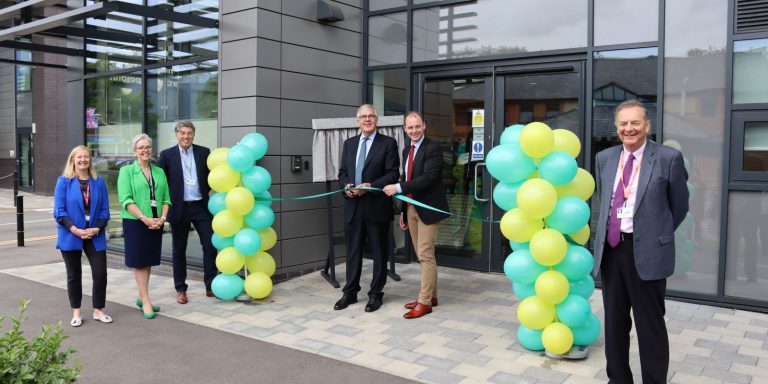Belvoir acquires mortgage advice firm for £3.6m
Belvoir Group, the property franchise and financial services group with its central office in Grantham, has acquired The TIME Group Limited (TIME) for an initial cash consideration of £3,673,000.
TIME, which trades as the Mortgage Advice Bureau, is an appointed representative firm of Mortgage Advice Bureau, the wholly owned subsidiary of AIM-listed Mortgage Advice Bureau (Holdings) plc (MAB), one of the UK’s leading networks for mortgage intermediaries.
TIME provides mortgage and related financial services to clients through its network of 64 advisers, all but two of which are either self-employed or small businesses operating on a self-employed basis licensed to TIME with MAB providing training, support, compliance, website and national marketing via the wider MAB brand.
The TIME adviser network extends across the north of England and the Midlands.
For the year ended 31 July 2021, based on unaudited financial statements, TIME generated revenue of £4,182,000 and adjusted profit before tax of £630,000. Within the past three years, the number of mortgage advisers within the TIME network has grown from 46 to 64.
Dorian Gonsalves, Chief Executive Officer, Belvoir, said: “We are delighted to announce the acquisition of TIME, whose network of 64 mortgage advisers will entirely complement our existing financial services network, both in terms of the management infrastructure and geography, creating a total of 307 advisers operating under the Belvoir Group.
“The acquisition of TIME will extend our network of financial advisers to support both our franchisees at a local level, as well as servicing leads from independent agents. This will in turn achieve greater penetration of financial services to the group’s client base for the benefit of both individual franchisees and the group as a whole.
“We would like to extend a warm welcome to the team at TIME to the Belvoir Group.”
More than 300 firms go to Drax contract event
More than 328 businesses attended an event run by renewable energy company Drax and its engineering, procurement and construction partner Worley, to learn how they can win contracts worth hundreds of millions of pounds to deliver Drax’s vital carbon removal technology, bioenergy with carbon capture and storage (BECCS).
The event, run in partnership with NOF, the UK’s leading UK energy sector business development organisation, and the West & North Yorkshire and Hull & Humber Chambers of Commerce, was held in Hull.
Drax has previously said that it aims to source 80% of the construction materials and services from British firms and to build a robust UK supply chain for BECCS, ahead of construction getting underway as soon as 2024, with the creation of around 10,000 jobs.
Graham Backhouse, Drax’s Commercial Director for the BECCS project, said: “We want to put British businesses at the heart of our plans to deliver BECCS. It was fantastic to see such a broad range of companies, large and small, from across the region come together to learn how they can benefit from hundreds of millions of pounds worth of new contracts.
“Negative emissions technologies like BECCS will play a vital role in enabling the UK to reach its net zero goals, as well as creating exciting opportunities for Britain to lead the world in this vital technology, creating a new sector of the economy, as well as export opportunities.”
David Hooper, External Affairs and Membership Director at Hull and Humber Chamber of Commerce, said: “The event was a fantastic opportunity for businesses from across the region to learn about the huge opportunities available for them to be involved in Drax’s BECCS project. Projects like this will provide a vital opportunity for the UK supply chain to access millions of pounds worth of contracts, supporting jobs and growth in the Hull and Humber region.
“It’s incredible to think that the Humber is the largest emitter of CO2 in Europe after the Ruhr Valley in Germany, so it’s great to see businesses coming together to make significant changes which will benefit the entire region over the coming years. The Chamber welcomes and supports this initiative and it’s encouraging to see so many local businesses wanting to get involved and play their part.”
Diana Taylor, Managing Director of Marketing Humber, said: “BECCS at Drax will have a huge impact both economically and environmentally across the whole of the region, and it will play a vital role in enabling a zero carbon Humber.
“It’s crucial that businesses from across the Humber play a role in Drax’s plans, as it will not only support the economic growth of the region, but it will also support the creation of green jobs, helping to level up the North.”
Drax has a proven track record in delivering ambitious and pioneering infrastructure projects with the conversion of its power station in North Yorkshire to use sustainable biomass. This has enabled it to become the UK’s largest single site renewable generator, supporting more than 6,600 jobs throughout its supply chain across the North, whilst reducing its emissions by over 95% and paving the way for the deployment of BECCS.
Government pledges £12m in push towards zero-emission shipping
Zero emission ferries and vessels are one step closer to being a reality, as Maritime Minister Robert Courts today confirmed £12 million funding to accelerate the research and development of zero emission maritime technologies.
Now in its second round, the Clean Maritime Demonstration Competition and the funding are said to cement the UK’s position as a world leader in clean maritime technologies that will support the creation of thousands of skilled jobs across the UK.
The CMDC is one of the first initiatives from UK SHORE, a new unit launched to make the maritime sector greener. Dedicated to creating a world free from shipping emissions, UK SHORE will work with industry to tackle numerous shipping emission challenges.
Through research and development investments, it will include the provision of domestic zero emission ferries, helping to tackle the about a million tonnes of carbon dioxide emissions that roll-on/roll-off vessels and passenger-only ferries contribute to the UK’s domestic shipping emissions.
Mr Courts said: “I want to see a new green age for maritime travel that is free from emissions.
“Following the success of last year’s competition, this second round has been designed to support a shipping future that uses the most creative and innovative ways for people and goods to sail in cleaner and greener ways. At COP26, we pledged to create a green maritime legacy for generations to come, and UK SHORE puts us at the forefront of the global green maritime revolution – supporting thousands of green jobs around the country.
Fulfilling the Clydebank Declaration agreed at COP26 to create green routes known as ‘green shipping corridors’ to and from the UK, this next round of the CMDC funding will include feasibility studies to help us work in partnership with industry to ultimately deliver green corridors both within the UK and internationally.
The £206 million research and development funding for UK SHORE is the biggest investment in maritime ever, and will accelerate the sector’s transition to a cleaner future supporting our voyage to net zero by 2050.
Maritime UK Chief Executive, Ben Murray, said: “The establishment of UK SHORE is a very important step on the UK maritime sector’s decarbonisation voyage.
“Its first intervention – an extension to the Clean Maritime Demonstration Competition – is showing the UK is determined to be a global leader in clean maritime. As before, industry will co-invest to create the solutions needed to decarbonise.
“The projects on display today – from remotely operated vessels to green port infrastructure and electric wind turbine charging points – proves Britain remains an island of maritime pioneers. Continued investment and collaboration with government will drive the momentum we need and create skilled jobs around our coast.The first Clean Maritime Demonstration Competition was launched last year by DfT to kickstart innovation in decarbonisation in the maritime sector.
Future elements of UK SHORE’s 3-year programme will include several more rounds of the Clean Maritime Demonstration Competition alongside other interventions to accelerate the development and use of key technologies.
NICs increase has immediate impact on businesses
Research carried out by the British Chambers of Commerce (BCC), of more than 1,100 UK employers, has uncovered a series of negative impacts from the increase in National Insurance contributions.
Firms said the rise in employer contributions to National Insurance (NI) from 13.8% to 15.05% had increased staffing costs, forced some to put up their prices, and meant they would be limiting their investment.
As part of its call for an Emergency Budget, the BCC is calling for the rise to be immediately reversed for at least a year, as firms battle surging costs on multiple fronts.
The BCC is calling for action to give businesses a chance to keep a lid on rising prices, boost productivity and ease cost pressures.
Hannah Essex, co-executive director of the BCC, said: “Businesses are telling us that the rise in National Insurance contributions has been a body blow as they try to get back on their feet.
“When firms are already facing a toxic mix of surging inflation, rising energy costs and supply chain disruption, this increase is very hard to swallow.
“The tight labour market is already pushing up staff costs and the NI rise has only served to exacerbate that pressure, without having a positive impact on recruitment.
“With firms’ profits also taking a further hit, after two years of the pandemic, it is no surprise that their investment intentions are also weakening.
“But it is not too late to change tack and push the increase back until firms are in a better place to take on the extra burden.
“The costs crises facing firms and people in the street are two sides of the same coin. If we can ease the pressure on businesses, then they can keep a lid on the price rises.
“Acting now will also put businesses in a better position to create the future profits needed to fill tax coffers.”
The other two Emergency Budget proposals include:
• Help firms manage the impact of rising energy prices by cutting VAT on their energy bills from 20% to 5% for a minimum of one year.
• Address labour shortages by reinstating free Covid tests for companies to ease the strain on productivity caused by persistent high absences.
£3.5m digital, transport and logistics academy opens in Boston
Boston College has opened its new Digital, Transport and Logistics Academy which will lead the way in delivering skills training for Lincolnshire’s logistics and transportation industry.
The new academy, which was opened by John Anderson, the third Viscount Waverley, will offer training courses with a focus on digital innovation and technologies for the future, as well as being relevant to the employment opportunities available within the sector.
“I am honoured to be associated with a new wing at Boston College dedicated to investing in people and skills for freight and logistics,” he said. “The college has rightly recognised the importance of the industry and is to be commended for running with educational delivery feeding into the wider government initiatives.
“These are exciting days and I congratulate Boston College for identifying that freight and logistics are fundamental in playing their part for the United Kingdom to manoeuvre through the challenges before us, establishing Boston College as a centre of excellence for learning in what is a key sector.”
The Digital, Technology and Logistics Academy was funded by a £2.45 million grant from the Greater Lincolnshire Local Enterprise Partnership, while the college paid the remaining £1.05 million. An additional £182,976 of funding from Boston Borough Council was used to purchase industry-standard equipment as part of the Towns Fund.
The Viscount Waverley, along with other special guests including Matt Warman MP, and Ruth Carver, Chief Executive of the Greater Lincolnshire LEP, were taken on a guided tour of the building and had the opportunity to observe learners who are currently using the new facilities and equipment.
This includes a transport workshop, a network and hardware computer room holding industry standard equipment, a driving simulator, HGV and electric/hybrid training rigs, and digital software ranging from basic IT skills all the way to modern smart technology to equip local employers for Industry 4.0.
Pat Doody, chair of the Greater Lincolnshire LEP, said: “The UK’s transport and logistics activities employ over 2.2 million people, and this new centre will help support local, national and international supply chains across the sector and generate career progression in the highly skilled digital economy.
“With our £2.4m skills capital grant contribution, the LEP is proud to have enabled the development of this amazing facility in Boston, which will provide much needed industry standard training and a progressive skills pathway from Level 1 to Level 5.”
Boston College principal and Chief Executive, Claire Foster, added: “We are delighted that our Digital Transport and Logistics Academy is finally officially open. The world-class learning environment and equipment are a significant investment supported by the Greater Lincolnshire LEP, providing critical technical and professional skills needed by our employers and our economy.
“Our learners at Boston College are already thriving in this new statement space and we look forward to delivering our new International Logistics courses in the DTLA from September.”
How businesses can survive the cost of living crisis
The cost of living crisis is having a real impact on business. Consumers are now left with less after their living expenses have increased while wages remain stagnant. Rick Smith of business consultants and insolvency experts, Forbes Burton, explains how businesses can avoid this without taking too much of a bite out of their business.
There’s a significant sense of trepidation in the air at the moment. With energy, food and prices in general rising with no signs of abatement, there’s a real pressure on consumers to spend less and save more. The cost of living crisis has been exacerbated by myriad factors, but real world events such as the conflict in Ukraine and the fallout that has on the global supply chain means wallets are more squeezed than in recent memory. Those with the misfortune to live through the last recession will have feelings of deja vu, while those who have not experienced this before will no doubt be slack-jawed at the almost vertical rises in costs.
But what about business?
As much as individuals are suffering, this will no doubt have impacts on business. As people tighten their belts and ultimately want to spend less as their wages are reserved for the spiralling costs of rent, food, energy and other necessities, businesses are left on the back foot at times. Rather than simply burying heads in the sand however, this is actually a great time to rethink, regroup and think about the future sensibly.
What can businesses do?
It’s simple really, plan ahead. Look at the following elements of your business:
Review your business plan: When was the last time you truly looked at your business plan? A year ago, two years ago? What has changed since then? How can you act on the changes that have been put your way? Seek out new, more realistic goals given the circumstances and even if things are going well now, look at what could be coming your way in the future. Could there be an unseen ramping up of costs for other elements of your industry that will impact you? Are the implications here simply going to be delayed?
Set out a clear marketing strategy: There’s never a better time to go to market than in a crisis or at pinch points in global financial periods of stress. Stopping marketing is what a lot of companies in distress set out to do once trouble heads their way. However, if you stop speaking to your audience, they will presume that you have simply shut up shop. Do some research, where are your customers spending most of their time? What are they searching for? Concentrate on those elements now and commit to a ‘mop up’ campaign to cover other channels to ensure you don’t miss anomalies along the way. Remember, to stop is to block your customers from ever finding you and established ones from coming back.
Look again at cash flow: Take a look at your projections for cash flow. If trouble does head your way, how long can you last on the cash reserves you have? Is it really time for that large purchase or would it be better to be able to pay your staff’s wages for another six months? Do you have enough liquidity or is there a gap in your finances that cannot be plugged? Use your cash wisely, try to consolidate debt to make headway on having a reserve if things get truly bad.
Look after your own: Staff retention is possibly more important now than ever. Making yourself an attractive employer at the moment would be key to keeping staff, attracting more dynamic individuals and keeping afloat. The costs associated with the hiring of new staff or replacing them pales in comparison to simply retaining them. Also reach out to your staff, are you confident they are making it through without too much trouble? Be helpful and offer help if they are struggling.
Sheffield City Mayor takes tough line on transport
Less than two weeks after taking office South Yorkshire’s new Mayor Oliver Coppard has is working to improve public transport.
He has already written to the new CEO of First Group challenging the company to deliver better services for South Yorkshire’s communities, and met the team at the Stagecoach depot in Rawmarsh to discuss the decarbonisation of the region’s bus network.
He has also asking regional bus operators to share six years of their patronage, performance, and financial data so officials can get on with the work required to assess the benefits and risks of franchising in South Yorkshire.
He said: “For too long our communities have had to put up with a declining, underfunded public transport network, with regular cuts to services. That’s not ok. I’m going to do everything I can to bring about improvements as quickly as possible.
“That’s why this week I’ve agreed to designate a director with a dedicated team who will take the so-called ‘franchising’ assessment forward at pace, and I’ve also taken one of the first major steps in delivering that process.
“I’m going to continue to use every lever I have to create a network that works for our communities. That includes extending free park and ride services, because right now all too many people are struggling with the cost of living. And I’m extending the Zoom Beyond pass, keeping bus fares as low as possible for 18–21-year-olds across South Yorkshire.
“Longer-term, I’m determined to fight for a world class, integrated public transport network in our region. It won’t be quick, and it won’t be easy, but that has got to be the goal.
The government have said they want to see a ‘London style transport network’ here in South Yorkshire by 2030, but right now we’re a million miles away from that goal and the clock is ticking. Without investment from government things are going to get worse, not better. We’re doing everything we can, but they need to put their money where their mouth is. We’re done with waiting.”
New study will explore nuclear reactor-based creation of hydrogen
A nine-month feasibility study at the Nuclear Advanced Manufacturing Research Centre in Sheffield will invest almost £250,000 to explore the possibilities of using advanced nuclear reactors as a route to more efficient low-carbon hydrogen production.
Led by Frazer-Nash Consultancy and the Nuclear AMRC the project will explore the feasibility of developing a hydrogen production demonstrator and test facility that simulates the heat and electricity outputs of a new generation of nuclear plant, based on a variety of small modular reactor and advanced modular reactor designs.
As well as supporting the development of new designs of SMR and AMR, the facility will help companies which are developing new technologies for low-carbon hydrogen production, enabling them to test and refine their technologies’ performance, with a goal of commercial deployment as part of a nuclear cogeneration installation in the mid-2030s.
Steve McCluskey, technology management consultant at Frazer-Nash and overall project delivery manager, says: “We are thrilled to have won funding for this exciting study combining new and emerging technologies from within the nuclear and hydrogen sectors, gaining valuable insights from industry on future trends and understanding their requirements.
“I look forward to working in close collaboration with the team members from within Frazer-Nash and the Nuclear AMRC to ensure the successful delivery of this project and having the opportunity to contribute to battling the global climate crisis in an innovative manner.”
The proposed test facility will cover hydrogen production by high-temperature electrolysis and thermochemical splitting of water. Both techniques are more energy efficient than conventional electrolysis, while avoiding the high greenhouse gas emissions of steam methane reforming.
By demonstrating how advanced nuclear reactors can effectively produce hydrogen, the new facility will accelerate the deployment of sustainable hydrogen production as part of the global transition to net zero emissions. As well as replacing fossil fuels for transport and heating, hydrogen can help decarbonise industrial processes such as steelmaking, chemical synthesis, and the production of ethanol and synthetic fuels.
Neil Murray, business development manager for advanced nuclear technologies at the Nuclear AMRC, says: “It is well understood that nuclear power will play an important part in meeting 2050 net-zero targets as a provider of baseload electricity to meet ever-increasing demands, but nuclear power’s cogenerative potential is absolutely massive and largely untapped.
“Various studies have shown that nuclear energy’s unique combination of heat and electricity can be used to produce clean hydrogen at a price similar to current renewable and fossil fuel methods, at any time of day, in all weathers, and without the need for fossil fuels or carbon capture. This demonstrator will seek to unlock the potential for nuclear as part of the wider energy mix, by answering the questions that would otherwise go unanswered until SMR and AMR reactors are operating in the 2030s.”
In the first phase of the collaborative project, Frazer-Nash and the Nuclear AMRC will work with hydrogen and nuclear industry partners to investigate the feasibility of a small-scale hydrogen production demonstrator to simulate the output of a range of AMR and SMR designs. This feasibility study will take nine months, supported by funding of around £237,000 from BEIS.
Tom Purnell, business manager for advanced nuclear and government at Frazer-Nash, says: “It is really encouraging to receive the support from BEIS for this project and a great endorsement of the contribution from advanced nuclear to achieve net zero. In collaboration with the Nuclear AMRC and with the backing of a range of both hydrogen production and advanced nuclear vendors, we are ready to truly contribute towards the delivery of a whole energy system.”
Construction set to make sustainability strides in 2022
The UK construction sector will make significant strides in tackling sustainability in 2022, as the market attempts to lower its carbon footprint in line with the Government’s wider climate change target.
Reducing carbon emissions is the area of business performance that construction leaders think will change the most in the next 12 months. According to BDO’s Construction in 2022 and Beyond, 48% of businesses surveyed as part of the annual report think their company’s carbon footprint will decrease in 2022. 66% of companies also have carbon neutral targets in place.
Last year, the Government set the world’s most ambitious climate change target to reduce emissions by 78% by 2035 compared to 1990 levels. Globally, the construction sector is responsible for 30 to 40% of natural resource use and 30% of greenhouse gas emissions.
Paul Fenner, partner and head of construction at BDO LLP, said: “While many large companies have already embedded environmental, social and governance (ESG) measures into their business, there is still a considerable way to go to ensure the entire sector is playing its part in meeting the UK’s ambitious climate change targets.
“With a raft of Government regulations aimed specifically at construction, such as requirements to have a carbon reduction plan in place for any public sector contract over £5 million, the direction of travel is clear.
“It’s promising to see that the wave of adoption and acknowledgement of ESG is gaining real momentum and viewed as one of the biggest areas of change when it comes to business performance in 2022. This is particularly clear in our latest Rethinking the Economy survey, which shows 60% of real estate and construction companies have declined to work with clients because of their ESG credentials.
“However, a number of smaller subcontractors simply don’t have the ability to meet the substantial costs that are associated with ESG and, as a result, this may have repercussions on future revenues. At present, many construction companies are still in survival mode and not thinking about the wider implications of ESG, but it’s vitally important that the industry does find ways and means to invest in an ESG strategy over the next three to five years to reduce carbon emissions and help save the planet.”
The Construction in 2022 and Beyond report also showed that optimism remains high in the sector, after a significant number of companies (47%) performed better than expected last year.
According to the survey, 91% of respondents feel positive about the prospects for construction in the UK – up from 87% last year. Three quarters of those surveyed also expected revenue to increase in 2022, with profitability (63%), order books (63%), headcount (61%) and capital expenditure (50%) also set to rise.
The latest official figures show that construction delivers £110 billion to the British economy and provides jobs for 10% of the country’s workforce. Overall, the construction sector output has grown by 1.1% at February 2022 when compared to February 2020, pre-pandemic levels, largely off the back of a 25% growth in Infrastructure.
Fenner said: “Construction is arguably one of the industries that has rebounded most quickly from the impact of the pandemic, with most subsectors now close to or at pre-pandemic levels of growth. This is in large part to long-term contracts spanning two to three years.
“While the outlook for construction looks bright, the sector must be mindful of the trading period that follows the end of these contracts and how this will impact on future revenue and profit. The key will be to focus on growing profitable contracts, rather than just increasing top-line revenue, while using innovation and technology wherever possible.”
The report has highlighted several long-standing concerns for the sector, such as the skills gap, supply chain resilience and ongoing materials price inflation. Three quarters of respondents stated that recruitment was the biggest challenge facing the UK construction sector in 2022, with gaps in knowledge and training, an aging workforce and the supply of overseas workers also posing a problem.
Fenner added: “Just when you thought it was safe to get back to the building site, uncertainty once again rears its head. After two years of seriously challenging conditions, the sector faces yet more trials in 2022 in the form of soaring energy prices, raw material prices, labour inflation and material shortages, adding to input costs and the evolving situation in Ukraine creating further unpredictability.
“As a result of material price inflation, low margin contracts in the industry – and the fact that Government COVID subsidies have now come to an end, resulting in tax deferrals and loans having to be repaid – there will be a real concern in the industry that a number of subcontractor may potentially fail. This, in turn, will cause issues and delays in completing contracts, which may have a spiralling effect.”
PR expert Mike Shields joins eComOne to shape digital PR offering
Lincoln-based eCommerce Growth Agency, eComOne has appointed Mike Shields to head up its Digital PR department.
Mike started his career in 2008 as a Journalist working on regional newspapers and B2B titles which then progressed to heading up PR departments in B2B, communications and international agencies.
His award-winning work has been featured across all major newspapers and hundreds of niche titles and he has helped launch several long-running business podcasts for clients.
CEO and Founder of eComOne, Richard Hill says, “Mike is a hugely respected PR professional in Lincolnshire who has already started making an impact on the calibre of our agency. His wealth of knowledge and impressive network has impressed our existing clients and we can’t wait to grow this department further by introducing retention marketing.”
“We have already won clients on the PR side of the business without massively advertising it. Our agency is going through a massive stage of repositioning and we can’t wait to shout more about our new and exciting offer!”
Mike Shields, Head of Digital PR says, “I’m really excited to be part of a team of SEO experts, the link between Digital PR and this part of marketing is intrinsic and I’m looking forward to bolstering our offering. eComOne has a wide variety of really engaging clients that I’m hoping to be able to make an impact with.”
Mike will be speaking at the Lincolnshire Business Expo, taking place on Tuesday 24th May at the Lincolnshire Showground. His presentation will be ‘Five Ways To Kickstart Your Digital PR Content’, Mike will also be joining the eComOne team on a panel discussion on wider digital marketing.
eComOne is currently going through a stage of growth, so keep an eye on the LinkedIn company profile for future job opportunities.












